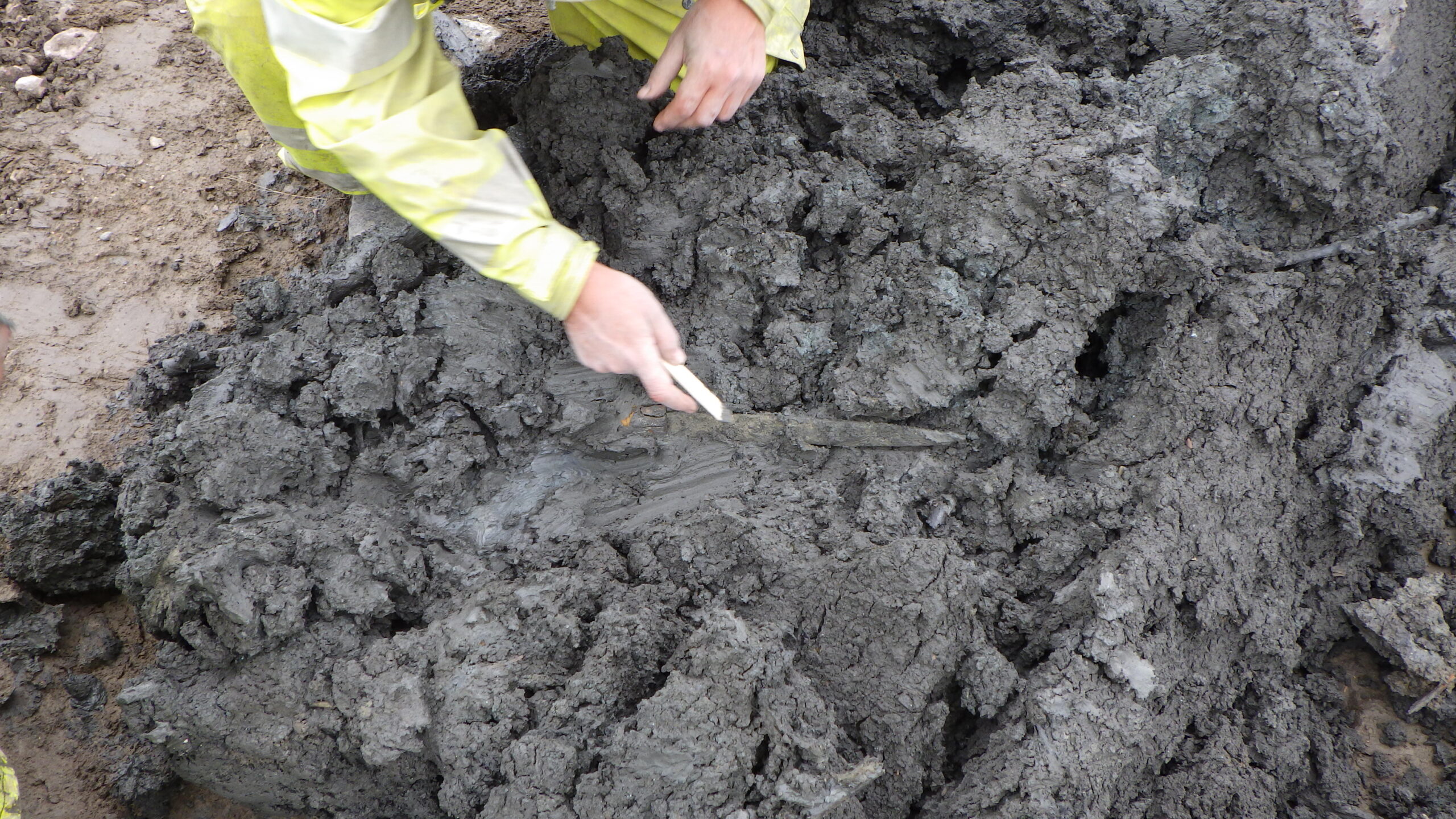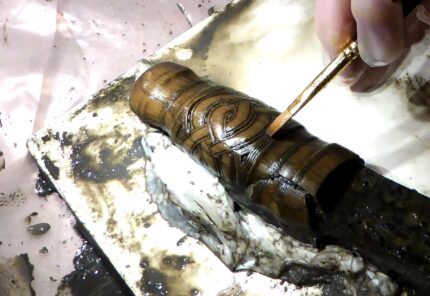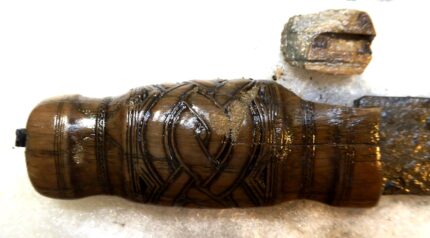An archaeological excavation in Skälby on the outskirts of Västerås, southeastern Sweden, has uncovered a scramasax (short sword) with its decorated wooden handle so well-preserved it looks like new even though it’s more than 1100 years old.
About 16 inches long with its unusually decorative grip intact, the scramasax was discovered in 2021 at the bottom of a well, embedded deep in the mud and the waterlogged clay. The anaerobic environment preserved the wooden handle in pristine condition. It is turned to fit the hand and carved with a central enlaced design. Its style dates it to the Vendel Period between the 7th and 9th centuries A.D.
The Skälby site was home to several scattered farming settlements in the Iron Age. Its wells were used for different purposes in different phases, alternating between water sources, garbage pits and places for ritual deposits. Archaeologists believe the short sword was sacrificed, thrown into the well as an offering, as swords like this were extremely valuable objects and not likely to be lost by accident. In fact, they are most frequently found as grave goods, interred with the warrior who wielded it as one of his most prized possessions.
The sword was fully excavated and cleaned in the archaeological laboratory of the Acta Conservation Center in Uppsala. It was examined under a microscope and determined to be a hardwood. A small fragment that broke off the inside of the grip was used to take a tiny sample. Conservators scraped the fractured surface of the loose piece with a scalpel for analysis, leaving the carved exterior surface intact.



